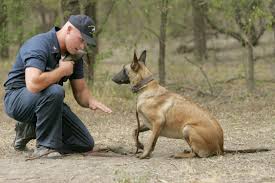How You Can Train Dogs To Stop Barking
 Basic Training to Teach a Dog to Stop Barking
Basic Training to Teach a Dog to Stop Barking
If you have a dog that barks more than they should, you will probably want to train a dog to stop barking. This training might be a good idea in certain circumstances. In others, it might be best to allow them to bark if they are doing so to help protect you and your surroundings. If you do want to train them, here are things you can do. Keep in mind that not all of these methods will work for all dogs.
Teach Command “Quiet”
If you can train your dog to respond to the command, “quiet” you should be able to use it when you need them to be quiet. This training can take a lot of time but can be done by taking your dog to a behavior class or working with them on your own. If you can train them to respond, then you have control over whether they will bark or not and can use that in different situations. If they are simply barking just to bark you can tell them “quiet.” But if they are doing so to keep a potential intruder away, they will still bark at them.
Removing Them
Another method to handle the barking would be to just remove them from the environment or places where they bark. If they always bark when people walk by your house, keep them in the back of your home. That way, they will not be tempted to bark. This doesn’t always work for every situation, but it can cut down on the amount of barking that they do.
Wear Them Out
A tired dog isn’t going to bark as much as a non-tired dog will bark. If you keep a canine moving and wear them out, you won’t have to worry about barking as much. You can do this by exercising your furry friend. You can take the canine on walks, playing with them or letting them run around your yard. The more active your dog is, the less likely they will bark because they are bored.
Some dogs also enjoy going to a dog park on a regular basis. Check and see if there are any parks you can take your dog to in your neighborhood. Then you can make the dog park a regular part of your routine with your dog.
Some people say that ignoring the barking is the way to go. Ignoring the activity isn’t always easy and isn’t an unfailing answer. Some dogs will bark for hours if nothing is done. If you know your dog is just barking for attention, this can be a way to handle it.
You can also hire a dog trainer to assist you with training your fur baby. There are trainers all around the world and specifically in the United States. If you are in Arizona, your can find a top-rated Scottsdale dog training expert at Find Your Inner Dog Training.
In the end, find what works for your four-legged friend. This discovery could be taking them in for some extra training or trying something at home. If the barking is bothering you or neighbors in your area, you will need to do something about it. Many cities have barking laws and ordinances. Tickets, fines and even worse penalties can be given if the barking is out of hand and bothering neighbors to the point that they file complaints. Luckily you do have a lot of options so you can find out what will work best for you and your dog.

 3. Lying Down
3. Lying Down